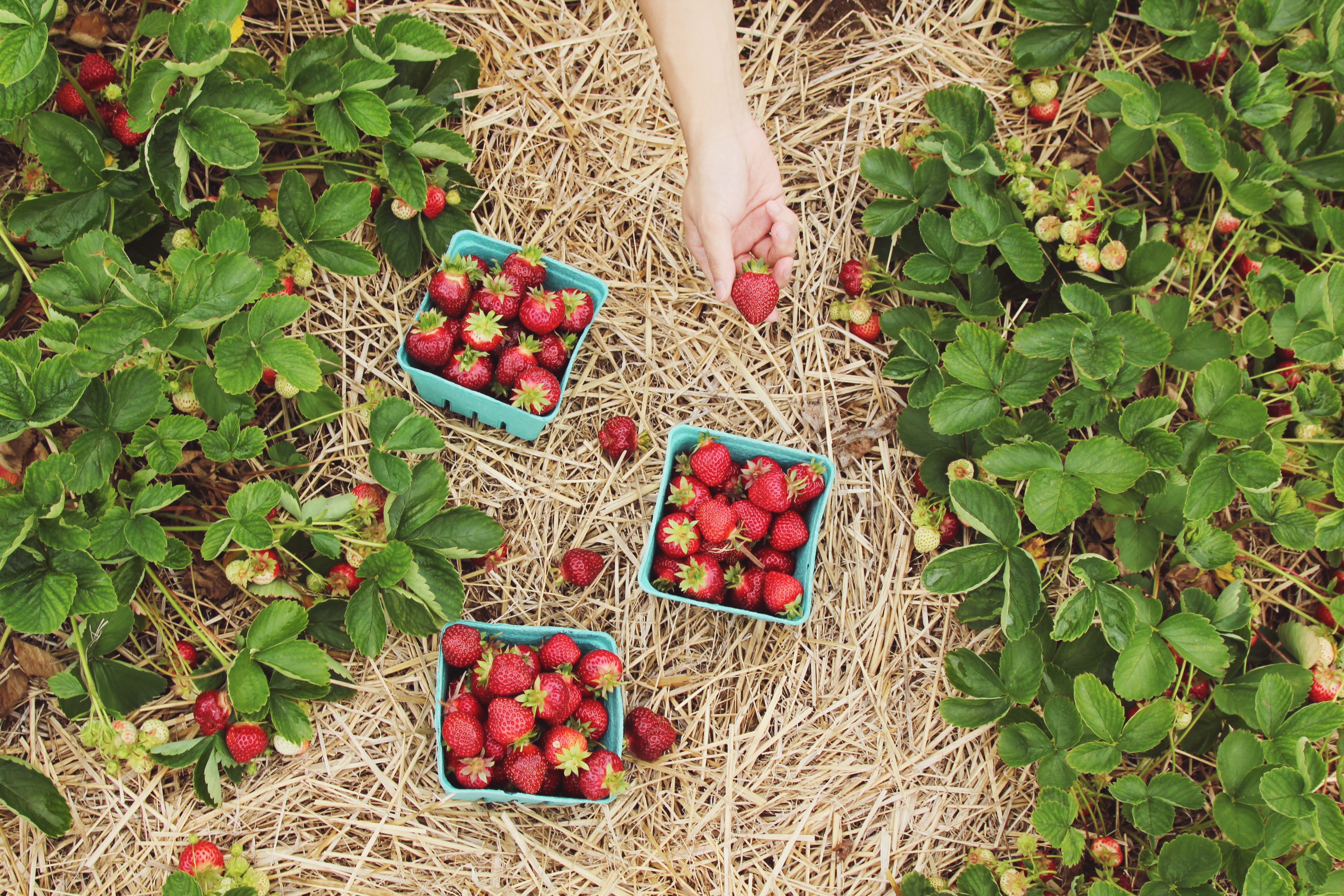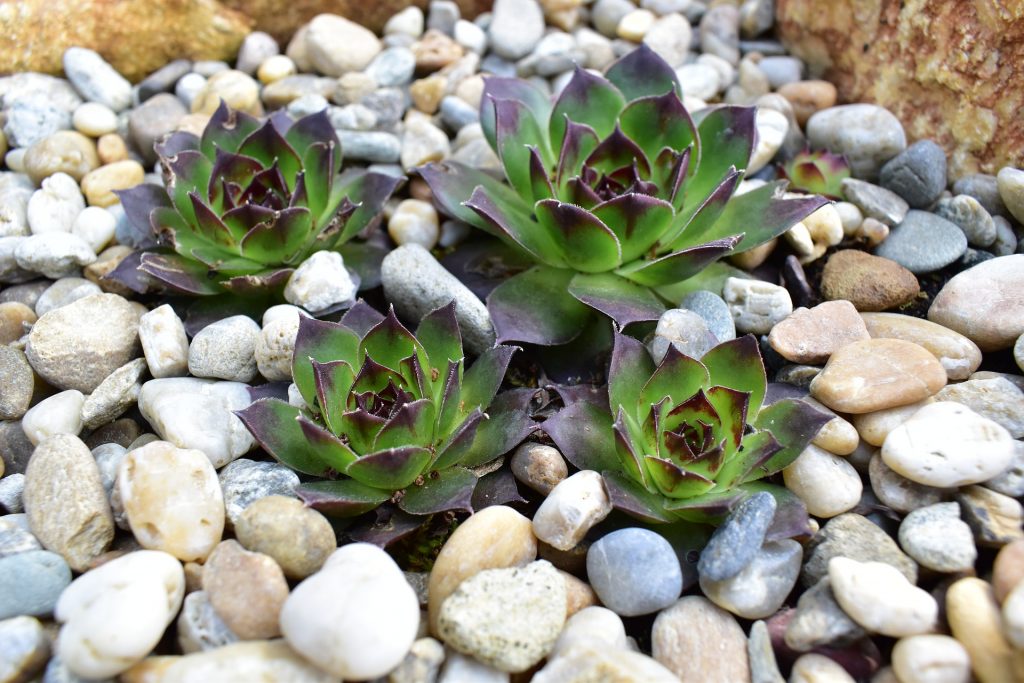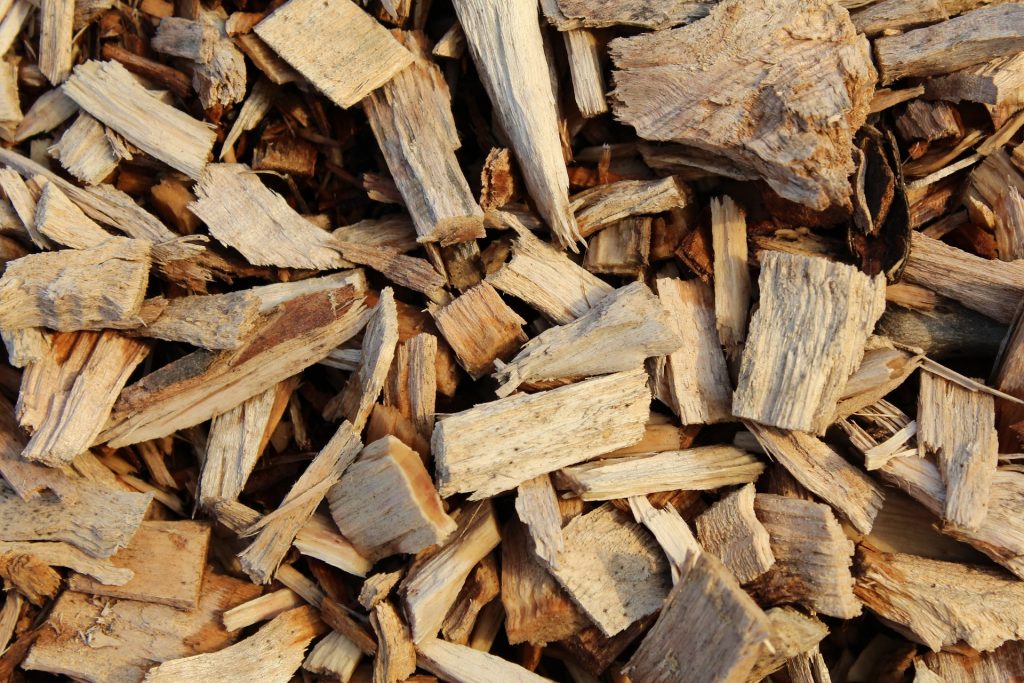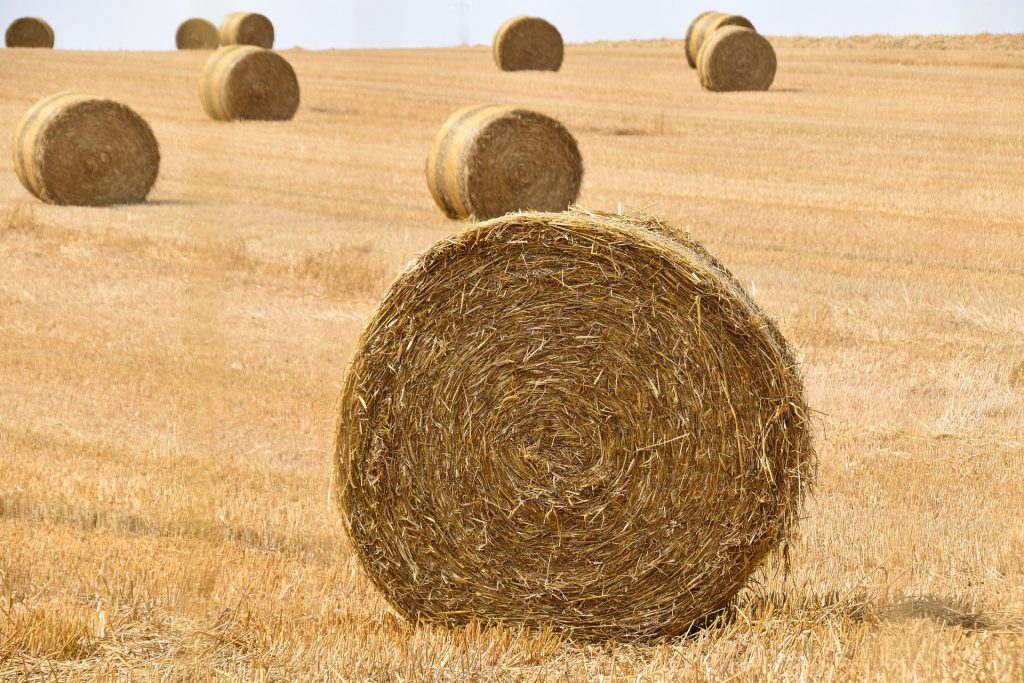
As summer approaches it’s important to protect your garden soil from the heat. Mulching helps to reduce evaporation of moisture from the soil, keeping it cool. It also helps to suppress weed growth by blocking sunlight. Mulch can be made of many different materials, as long as it works for the purposes above-mentioned. Some types of mulches also have additional benefits, such as providing nutrients back to the soil as it decomposes and improving aesthetics of your garden.
Which mulch to use?
The best mulch for your garden will depend on what type of plant you are growing. Established plants can benefit from mulch that decomposes slowly, such as rocks and wood chips, providing protection and nutrients over longer periods of time. Vegetable gardens on the other hand will benefit from mulch that breaks down faster, such as hay or straw.
Rock mulch

Rocks are great for a low maintenance garden, since you may never really need to replace them. For this reason they may have a higher initial cost, but should be cheaper in the long run. If you live in an area prone to bush fires, rocks can also help as they are nonflammable. Rocks will also help keep your garden tidy on windy days as they tend to be heavier than other types of mulch.
Rocks may not be a good choice for heat or drought sensitive plants as they actually absorb heat. They are also not a good choice for nutrient hungry plants as they provide negligible nutrients back to the soil.
Wood chip mulch

Wood chips or bark are a great choice for most types of plants, including trees and shrubs. Wood chip mulch will help retain moisture in the soil and an even temperature. It’s also low maintenance since it decomposes slowly with the added benefit of releasing nutrients back into the soil.
However, wood chip mulch is not a good choice for edible plants. Wood chip will not provide the nutrients vegetables and herbs need fast enough. Another problem is that as it decomposes it can make soil dominated by bacteria and fungi that may actually be harmful to edible plants.
Hay or Straw mulch

Hay or straw, such as lucerne, sugar cane, and pea straw are ideal for edible gardens. It helps to protect the soil from the heat and reduces moisture evaporation. It’s also nutrient rich and decomposes faster, helping your veggies grow. Lucerne and pea are especially rich in nitrogen, which is an essential nutrient for most veggies.
Because hay and straw decompose quicker than other types of mulch they may need to be re-applied regularly.
Other types of mulch
In addition to the common materials above, there are a few others you may be able to use as mulch and achieve similar benefits. Shredded paper or cardboard for example can also provide similar benefits to hay by protecting plants from heat, retaining moisture and suppressing weeds. However, it will likely not provide as much nutrient and won’t look as appealing as hay or straw.
You can also use compost and garden waste, such as dried leaves, as another type of nutrient rich mulch. However, it may decompose even faster than hay and may not help to suppress weeds as well.
How much mulch do I need?
A good rule of thumb for applying most types of mulch is to cover the soil with a 5 cm thick layer of mulch. But it’s important to keep it a few centimetres away from stems, otherwise it can cause the stem to rot.
The ideal time to apply mulch is during spring when temperature conditions are moderate, so it can help maintain that condition and protect plants from summer heat.
In summary
The best mulch for your garden will depend on the type of plants you are growing. If you have a low maintenance garden, with ornamental trees and shrubs, the best mulch will be one that decomposes slowly such as rocks, wood chips or bark. This will improve the appearance of your garden and keep weeds away. If you have edible plants, such as veggies and herbs, you should choose one that decomposes more quickly and is rich in nutrients, such as hay, straw or compost.
